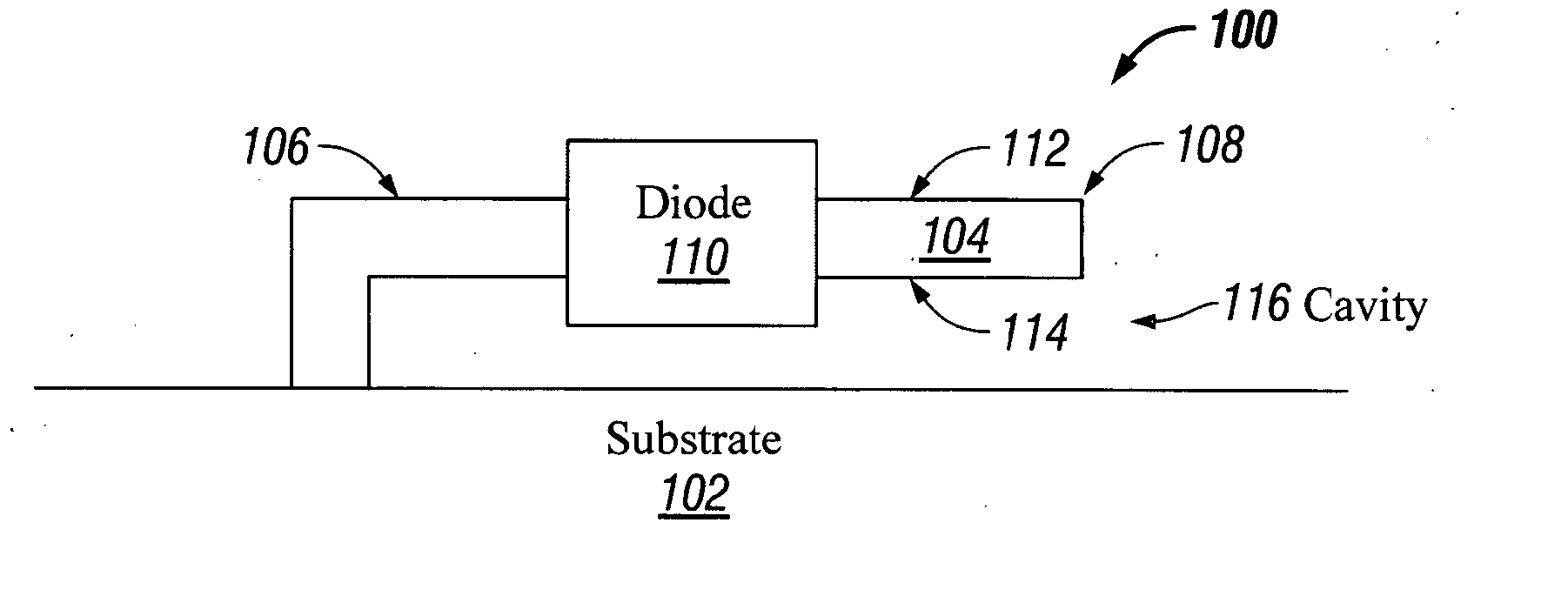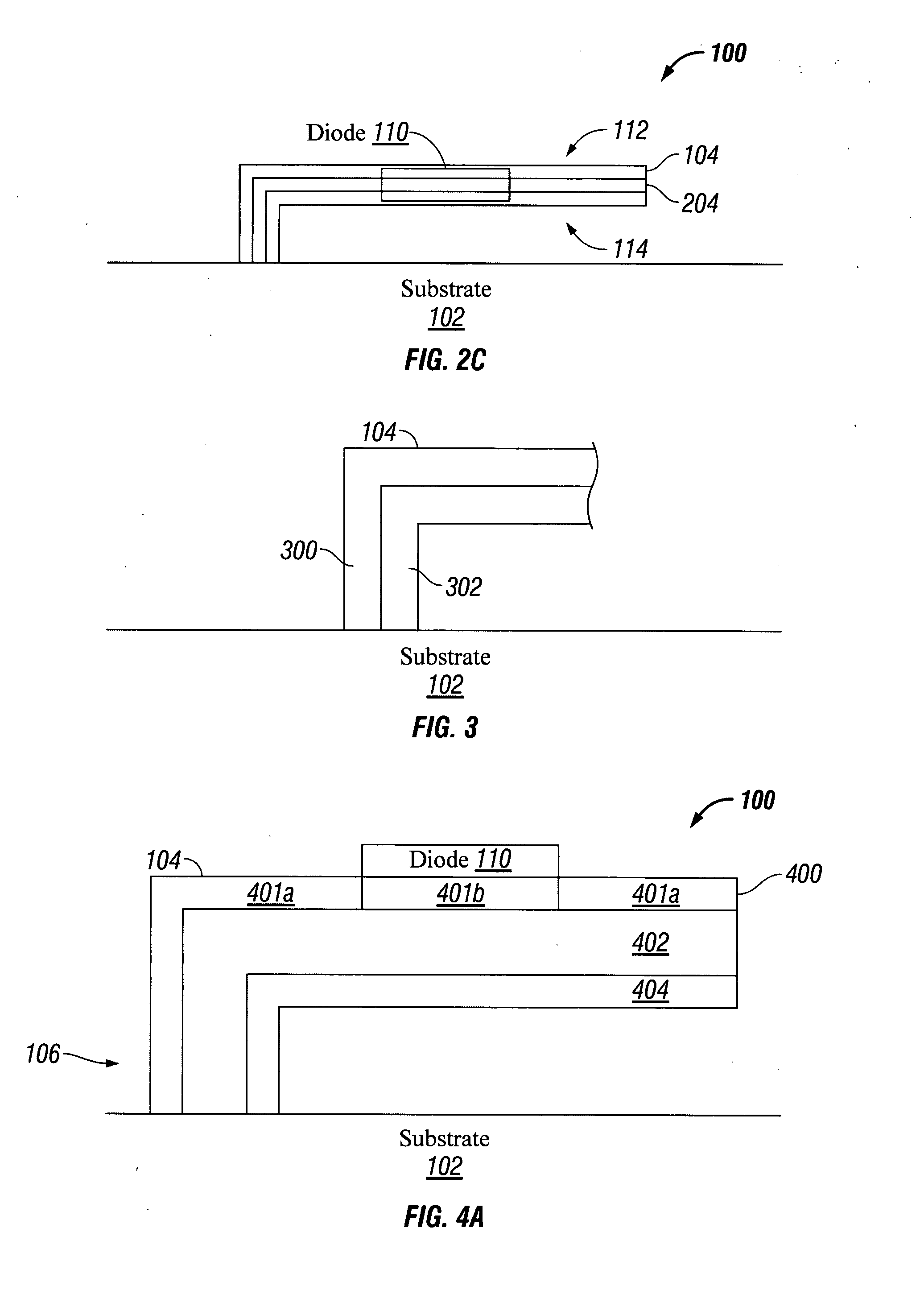Piezo-diode cantilever MEMS
a diode and diode technology, applied in the direction of microstructural devices, acceleration measurement using interia forces, instruments, etc., can solve the problems of changing electrical current and strain across a large surface area to create current changes, and achieve enhanced mechanical strain, enhanced chemical vapor deposition, and reduced mems
- Summary
- Abstract
- Description
- Claims
- Application Information
AI Technical Summary
Benefits of technology
Problems solved by technology
Method used
Image
Examples
Embodiment Construction
[0033]FIG. 1 is a partial cross-sectional view of a piezo thin-film diode (piezo-diode) cantilever microelectromechanical system (MEMS). The piezo-diode cantilever 100 comprises a substrate 102. Some possible substrate materials include glass, polymer, quartz, metal foil, Si, Si-containing materials, sapphire, ceramic, and compound semiconductor materials, such as Si-germanium for example. A multi-layered film cantilever beam 104 has a distal end 106 anchored to the substrate 102, and a proximal end 108. A diode 110 is embedded in the cantilever beam 104 and shares a film layer in common with the cantilever beam 104. The cantilever beam 104 has a top surface 112 and a bottom surface 114. A cavity 116 is formed between the cantilever beam proximal end 108 and the substrate 102.
[0034] The cantilever body can be a rectangular as shown, or shaped (e.g., as a triangle, circle, or oval), with one or multiple points for anchoring to the substrate. The cantilever beam 104 and diode 110 fil...
PUM
 Login to View More
Login to View More Abstract
Description
Claims
Application Information
 Login to View More
Login to View More - R&D
- Intellectual Property
- Life Sciences
- Materials
- Tech Scout
- Unparalleled Data Quality
- Higher Quality Content
- 60% Fewer Hallucinations
Browse by: Latest US Patents, China's latest patents, Technical Efficacy Thesaurus, Application Domain, Technology Topic, Popular Technical Reports.
© 2025 PatSnap. All rights reserved.Legal|Privacy policy|Modern Slavery Act Transparency Statement|Sitemap|About US| Contact US: help@patsnap.com



